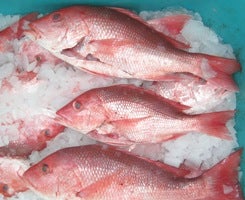NOAA’s National Marine Fisheries Service recently released the Gulf of Mexico 2010 Red Snapper Individual Fishing Quota (IFQ) Annual Report, and it provides a wealth of data and information collected during the fourth year of the IFQ program. The report comes as the 5-year review of the IFQ is underway, and offers us a chance to use the latest data to evaluate the success of the program.
By all counts, the IFQ has been a success. Back in 2006 when the Gulf Council was considering various management options in the red snapper fishery, fishermen had a short season each year, and had to go out even in dangerous conditions. The markets were flooded with fish for a short period of the year (and fishermen got low prices for their fish), and since the fishermen couldn’t decide when, where, or how to fish, they had excessive bycatch of red snapper and everything else. And to top it all off, they ended up going over quota anyway.
Then in 2007, the IFQ brought in a new way of doing things. After getting approved overwhelmingly by local fishermen in not one but two referendums, the IFQ brought flexibility and stability to the fishing industry. Fishing days increased from an average of 77 days before catch shares to 365 days a year. Catch shares improved the stability of fishing employment; they allowed vessel owners the opportunity to provide full time jobs to qualified captains and deckhands, without the variability that results from short seasons. In contrast, recreational fishermen only had 53 days to fish for red snapper (not including lost days due to the oil spill) under traditional management in 2010, and only 48 days in 2011. Read More










